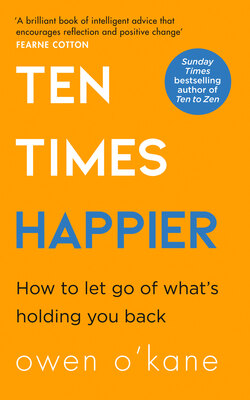Читать книгу Ten Times Happier - Owen O’Kane - Страница 29
CASE STUDY
ОглавлениеJulie is a forty-year-old mum of two young children and working full-time as a bank manager. When she came to my private practice for therapy she was exhausted, anxious and not sleeping well. Her initial goal in therapy was to learn techniques to cope better at work as she was about to be promoted and take on more responsibility.
As I began working with Julie, I soon discovered that she was clearly a very competent, loving mum. She loved her husband and enjoyed her job. Her external world was relatively stable. Initially I wondered whether it was the sheer volume of responsibility that was causing her issues. We discussed boundaries, time management and all sorts of techniques. This wasn’t helpful. Every week she would return to therapy in the same tired, anxious emotional state. We were clearly not on the right track.
It was around the fourth session when Julie came in, sat down and cried for nearly fifteen minutes before she spoke. When she had composed herself I asked her how she was. She replied, ‘It’s still the same.’ I asked her what ‘it’ was. ‘My mind.’ I asked her to describe what that was like – and her description provided the solution.
Julie described a mind that was on hyper-alert the entire time: thinking, worrying, planning, wondering, questioning, doubting and self-criticising. Although her presentation was theoretically in line with diagnostic criteria for an anxiety disorder, I was less interested in labelling her with a diagnosis. For me, measurable improvement is much more important. It was very clear to me that the root of her current problem was linked to how she was relating to her mind. We explored this further. She was paying attention to all of her mind’s activity. She was over-engaging with the thoughts, trying to work them out.
Despite the content of her mind – often self-critical thoughts – she eloquently described the tone of her mind. It was like a head mistress telling her she wasn’t good enough and that she was failing at everything all of the time. Such thoughts were creating anxiety and exhaustion as she tried to battle them.
I asked Julie the following questions:
• Have you ever acknowledged your thoughts just as thoughts, not facts?
• Have you ever created any space between you and your thoughts?
• Have you ever examined the evidence as to whether these thoughts are true?
• Have you ever considered that you can let these thoughts go?
It will come as no surprise that the answer to every question was no. From that moment our agenda for therapy was set and Julie embarked on her journey to pay less attention to her negative thoughts. She worked on the techniques, practised between sessions and within a few weeks she started to improve considerably. Her anxiety dropped, her sleep improved and her energy returned. Julie was no longer a slave to her mind.
Julie’s distress ultimately wasn’t caused by the challenges of her external world but by her relationship with the internal wrangling of her mind.
Julie’s story is not uncommon. Sometimes accepting negative thoughts as true without question is the primary problem but, more often than not, it is accompanied by other difficulties. Nevertheless, the mind is the epicentre of all our experiences, so mastering these techniques will liberate you in more ways than you can imagine.
If Julie’s story strikes a chord with you, I encourage you to pay close attention to your commitment to the work in this chapter. While all of the work in each chapter is important, the mind’s impact on our wellbeing can seem less obvious, but it is vital. Take control of your mind and you are on the road to regaining more joy in your life. Regrets will lessen, which, as it happens, is the next step on our journey: learning to manage regrets that are getting in the way of your life.
